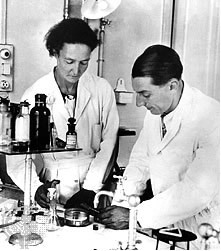the french scientist Henry Becquerel (1852-1908) was one of the contributors to the discovery of radioactivity. His work involved uranium radiation emitted on photographic film. Follow a little of the process:
Not knowing what that experiment would yield him, Becquerel decided to wrap photographic films with black paper and the kept in drawers containing the double sulfate salt of potassium and uranyl, given by the molecular formula K2(UO2) (SO4)2. Days later, he opened the drawer and noticed that the films were stained: what had caused the stains? This was a question that puzzled Becquerel.
One could even suggest that what stained the films was the incidence of sunlight, but how, if they were stored in dark drawers? Becquerel discarded this hypothesis and suspected that it was likely to be a kind of radiation coming from Uranium.
Do not stop now... There's more after the advertising ;)
At that time, it remained to be seen whether other salts also stained the photographic plates, and for this, Becquerel carried out more tests involving other types of salts. He then proved that only the salt containing uranium was responsible for the radioactive effects.
Studies related to the radioactivity of Uranium earned Henry Becquerel the Nobel Prize in 1903.
By Líria Alves
Graduated in Chemistry
Would you like to reference this text in a school or academic work? Look:
SOUZA, Líria Alves de. "Henry Becquerel and Radioactivity"; Brazil School. Available in: https://brasilescola.uol.com.br/quimica/henry-becquerel-radioatividade.htm. Accessed on June 28, 2021.


